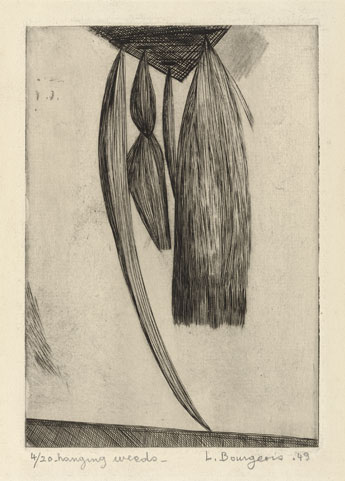Engraving
Bourgeois had a reverence for what she called the “symbolic power” of engraving, often referring to its ability to “convert aggression” into something useful. But she bemoaned the fact that strength and control were required to push the burin through the metal plate. She complained that she did not have the necessary “biceps.” However, she loved the stiff, assertive, tactile quality of the engraved line.
Bourgeois began making engravings in the 1940s at Atelier 17, the print workshop Stanley William Hayter temporarily transferred from Paris to New York during the war years. Though she did not usually respond favorably to a workshop environment, Bourgeois gravitated to Atelier 17 for the company of the international group of artists who frequented it. Bourgeois found Hayter intimidating as he demonstrated engraving, but remembered feeling useful in the shop because she could facilitate communication with the artists who spoke only French. For her most ambitious print project at that time—the illustrated book He Disappeared into Complete Silence—Bourgeois turned to engraving. She employed it again for the second edition, published years later in 2005, when she worked with printer Felix Harlan of Harlan & Weaver. She also chose engraving for the large-scale illustrated book the puritan, published in 1990 with Osiris.
